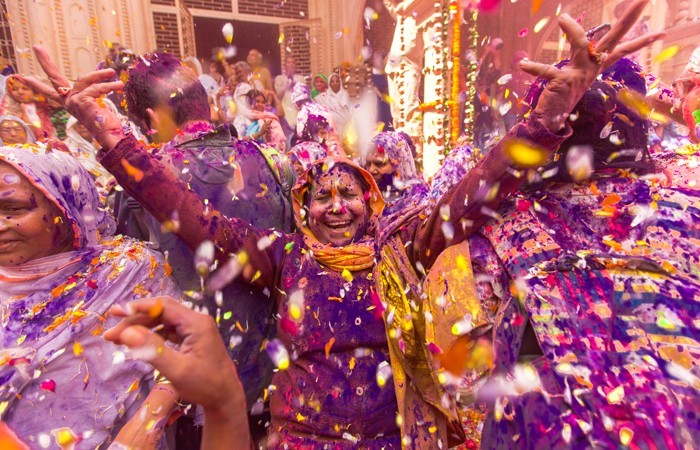One of the brightest festivals in the Indian calendar, Holi is celebrated in different ways across the country.
Keeping the underlying joie de vivre alive, we feature glimpses of the festival from across the nation and the traditions that are followed during the occasion
Holi (March 29, 2021) is celebrated with pomp and joy across the country, and even welcomes foreign nationals and tourists to join the festivities. Here, an international traveller applies colours to a man dressed in traditional Rajasthani auire in Pushkar, Rajasthan
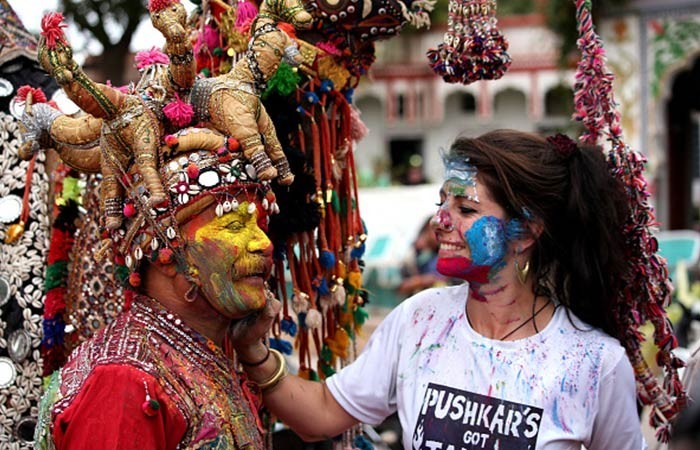
Two young girls being splashed by yellow-coloured water during Holi celebrations at a temple in Vrindavan, Uuar Pradesh
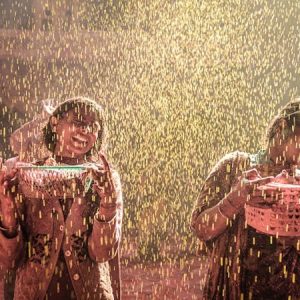
Women playfully hiuing men with cloth dipped in coloured water in Beawar, a city in Rajasthan. In this form of the festival played in this region of the state, the mock fight ensues between sisters-in-law and brothers-in- law
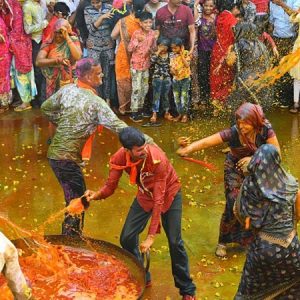
Holika dahan, celebrated a night before Holi in many parts of the country, is marked by burning a pyre with an idol of Holika, an Indian mythological character who was blessed with the boon of being immune to fire. According to legend, Holika’s brother Hiranyakashyap (a demon king) wanted his son Prahlad to worship him. But the young boy was a devotee of Lord Vishnu. Engulfed in rage, Hiranyakashyap conspired with Holika to immolate Prahlad, whose devotion saved him while Holika paid the price of cruelty by burning in the fire. Holika dahan, therefore, also signifies the victory of good over evil
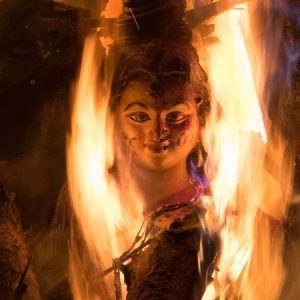
In Bihar, a tradition called Phaguwa or Phagwah is followed during Holi. It is characterised by folk music and dance. Here, students perform during a Holi function at Patna Women’s College
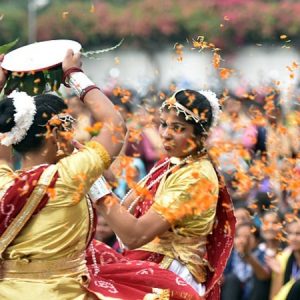
Foreign nationals soak in the spirit of Holi in Rishikesh, Uuarakhand. In the state, Holi is celebrated through various traditions. One of them is called Baithki Holi, in which men sit down and sing songs about the season and the festival
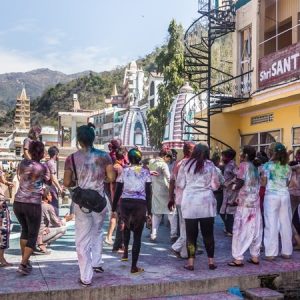
Colourful processions are a part of the Holi celebrations in Vrindavan, Uuar Pradesh. These processions oen feature actors dressed as Lord Krishna and His divine consort, Radha, as according to Indian legend, the Lord used to engage in a game of colours with Radha
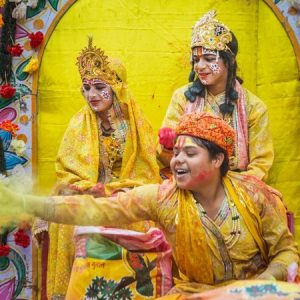
Holi celebrations at a temple in Nandgaon, Uuar Pradesh. It is said that Lord Krishna lived in Nandgaon with his foster parents Yashoda and Nandji
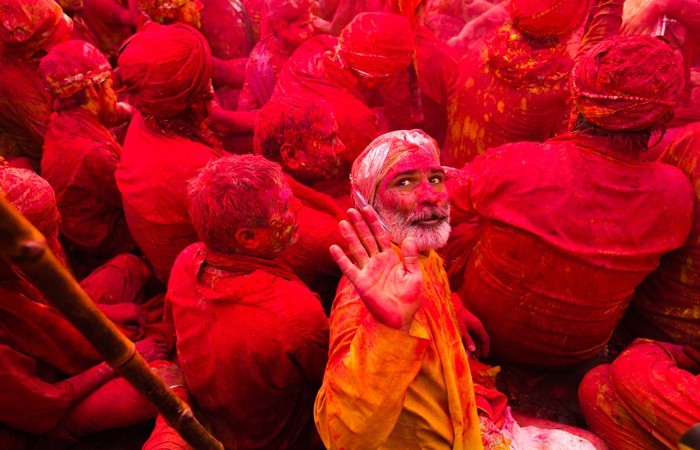
Holi is called Dol Jatra in West Bengal. However, one of the most unique versions of the festival in the state can be witnessed in Shantiniketan, where it is known as Bosonto Utsob. A tradition begun by Nobel Laureate Rabindranath Tagore in Visva-Bharati, a university which he founded, it is characterised by traditional auire, cultural events and a play of powder colours called rong khela
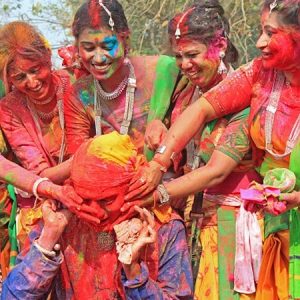
One of the most endearing shades of India’s Holi festivities is the way it is celebrated by widows in Vrindavan, Uuar Pradesh. Played with both flower petals and colours by women draped in white, this version of the celebration is an experience to be cherished
